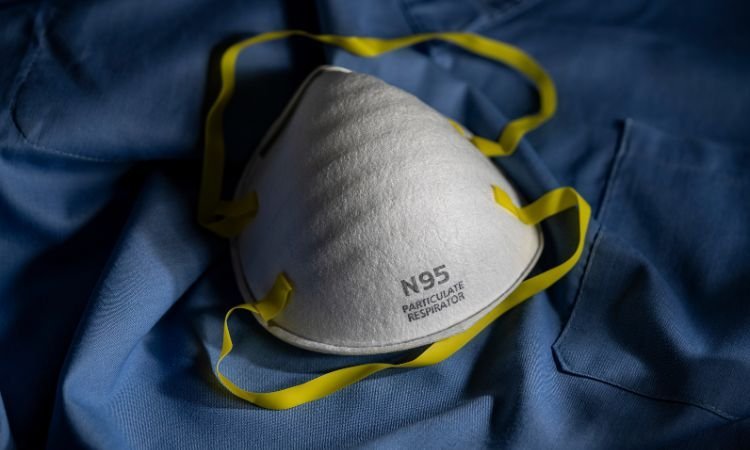The Evolution of N95 Respirators Market: From Invention to Modern-Day Essential
The global N95 respirator market size stood at a value of USD 1.26 billion in 2023

The global N95 respirator market size stood at a value of USD 1.26 billion in 2023. The market is further expected to grow at a CAGR of 7.4% in the forecast period of 2024-2032 to attain a value of USD 2.38 billion by 2032. In the midst of the COVID-19 pandemic, the significance of N95 respirators has been underscored, highlighting their critical role in protecting healthcare workers and the public from respiratory illnesses. This article explores the evolution of N95 respirators, from their inception to becoming a modern-day essential in healthcare and industrial settings.
Historical Background
The N95 respirator, a cornerstone of respiratory protection, has a rich history that dates back to the 1990s. Its invention was a response to the growing need for a protective mask capable of filtering out airborne particles. The credit for the creation of the N95 respirator goes to Peter Tsai, who developed it while working at the University of Tennessee. Originally intended for industrial use, the N95 respirator gained prominence in the healthcare sector during the outbreak of severe acute respiratory syndrome (SARS) in 2002-2003.
During the SARS outbreak, healthcare workers faced significant risks of contracting the virus while treating infected patients. The N95 respirator emerged as a vital tool in protecting these frontline workers by filtering out infectious particles. Its effectiveness in preventing the transmission of respiratory diseases led to widespread adoption in healthcare settings worldwide.
Over the years, the design and materials used in N95 respirators have undergone several iterations to enhance performance and comfort. From the early models characterized by rigid shapes and stiff materials, manufacturers have transitioned to more ergonomic designs featuring softer, more pliable materials. These advancements have improved the overall fit and seal of N95 respirators, ensuring better protection for users.
N95 Respirators in Public Health Emergencies
Public health emergencies, such as pandemics and outbreaks of infectious diseases, underscore the critical role of N95 respirators in safeguarding public health. The COVID-19 pandemic, caused by the novel coronavirus SARS-CoV-2, highlighted the importance of respiratory protection measures in mitigating the spread of the virus.
N95 respirators emerged as a frontline defense against COVID-19, particularly for healthcare workers involved in the diagnosis, treatment, and care of infected patients. The respirators, designed to filter out at least 95% of airborne particles, proved to be highly effective in reducing the risk of viral transmission. However, the unprecedented demand for N95 respirators during the pandemic led to shortages, highlighting the need for robust supply chains and emergency preparedness strategies.
Technological Advancements
Advancements in technology have driven significant improvements in N95 respirator design and performance. Manufacturers have focused on developing innovative materials and manufacturing processes to enhance comfort, fit, and filtration efficiency.
One notable advancement is the introduction of electrostatically charged filtration media, which enhances particle capture efficiency without increasing breathing resistance. This technology allows N95 respirators to achieve higher filtration efficiencies while maintaining breathability, thereby improving user comfort during prolonged wear.
Additionally, advancements in 3D printing technology have enabled the customization of N95 respirators to better fit individual facial contours. This personalized approach ensures a secure seal, minimizing the risk of leakage and enhancing overall protection.
Regulatory Framework
The certification and regulation of N95 respirators are overseen by regulatory agencies such as the National Institute for Occupational Safety and Health (NIOSH) and the Food and Drug Administration (FDA) in the United States. These agencies establish rigorous standards for respirator performance, fit, and filtration efficiency to ensure user safety.
Manufacturers seeking to market N95 respirators must adhere to these standards and undergo thorough testing to obtain certification. Compliance with regulatory requirements is essential to ensure the effectiveness and reliability of N95 respirators in protecting users from airborne hazards.
In addition to national regulations, international standards such as those established by the International Organization for Standardization (ISO) provide guidance on respiratory protective devices, including N95 respirators. Harmonization of regulatory requirements facilitates global trade and ensures consistent quality across different markets.
Economic and Environmental Impact
The N95 respirator market has experienced significant growth in recent years, driven by increasing demand from healthcare and industrial sectors. The economic impact of N95 respirator production and distribution is substantial, with manufacturers investing in capacity expansion and technological innovation to meet growing demand.
However, the disposal of N95 respirators poses environmental challenges, as these single-use devices contribute to waste generation. Proper disposal methods, such as recycling or incineration, are essential to minimize environmental impact and promote sustainability.
Efforts to address these challenges include the development of biodegradable or reusable alternatives to traditional N95 respirators. Research into eco-friendly materials and manufacturing processes aims to reduce the environmental footprint of respiratory protection devices while maintaining their efficacy and safety.
Future Outlook
The future of N95 respirators is shaped by ongoing advancements in technology, regulatory frameworks, and public health priorities. Continued research and development efforts are expected to lead to further improvements in N95 respirator design, performance, and sustainability.
Challenges such as supply chain disruptions, regulatory complexities, and emerging infectious diseases will necessitate proactive measures to ensure the availability and effectiveness of N95 respirators. Collaboration between government agencies, industry stakeholders, and healthcare professionals is essential to address these challenges and safeguard public health.
Click here to checkout our other reports:- https://www.expertmarketresearch.com.au/
What's Your Reaction?











![Blog Submission Sites 2024 [High DA]](https://blognow.co.in/uploads/images/202306/image_100x75_6494a03eaff5e.jpg)
![Article Submission Sites 2023 [High DA & PA]](https://blognow.co.in/uploads/images/202307/image_100x75_64c4181f17036.jpg)
![Classified Submission Sites 2023 [High DA & PR]](https://blognow.co.in/uploads/images/202306/image_100x75_649dcd5260808.jpg)




![Article Submission Sites 2023 [High DA & PA]](https://blognow.co.in/uploads/images/202307/image_750x415_64c4181f08ed5.jpg)
![Classified Submission Sites 2023 [High DA & PR]](https://blognow.co.in/uploads/images/202306/image_750x415_649dcd5247eeb.jpg)
![Blog Submission Sites 2024 [High DA]](https://blognow.co.in/uploads/images/202306/image_750x415_6494a03e96bfa.jpg)
